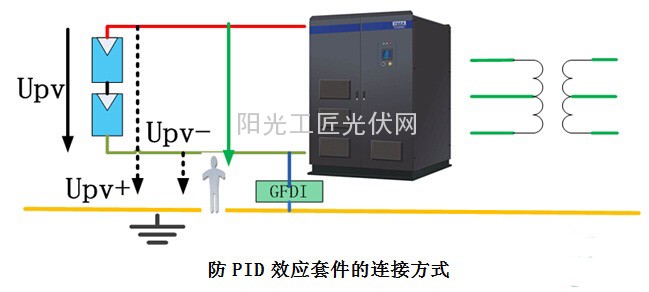Introduction: The PID effect is a terrible killer for photovoltaic power generation, and the root cause is related to environmental factors and component packaging materials. It is believed that future component manufacturers will be able to find a more reliable material and block the occurrence of PID effect from the root. However, in the present situation, negative grounding is undoubtedly the most reliable way to suppress the PID effect. With the continuous development of the photovoltaic industry, the application of photovoltaic power plants is from the uninhabited Gobi Desert to the sunny inland and coastal cities. The difference in the application environment has caused the difference in the power generation efficiency of photovoltaic power plants. As one of the important factors affecting the power generation of the power plant, the PID effect of the component has attracted widespread attention from the industry. With the continuous development of the photovoltaic industry, the application of photovoltaic power stations is from the uninhabited Gobi desert to the sunny inland and coastal cities. The difference in the application environment has caused the difference in the power generation efficiency of photovoltaic power plants. As one of the important factors affecting the power generation of the power plant, the PID effect of the component has attracted widespread attention from the industry. What is the cause and harm of PID effect? What program is the most reliable method to suppress PID effect? 1. What are the hazards of the PID effect? PID (Potential Induced Degradation), also known as potential-induced attenuation, is the packaging material of the battery module and the material on the upper surface and the lower surface thereof. Ion migration occurs under the action of a high voltage between the battery chip and its grounded metal frame, resulting in component performance. Decay phenomenon. The following table shows the comparison of parameters and IV curve before and after the component PID effect test [1]. It can be clearly seen that the PID effect has a great influence on the output power of solar cell modules and is a “terrorist†for photovoltaic power generation. Why does the PID effect occur? The data from PV cell module manufacturers and research institutes shows that the PID effect is closely related to the component composition, packaging materials, ambient temperature, humidity, and voltage. 1) The composition of the solar cell module The solar battery module consists of glass + EVA + battery + EVA + TPT + frame. The composition of each part is shown in the figure below. 2) The process of PID effect At present, there are different opinions about the real cause of the PID effect of components. The typical explanation is as follows: (1) Moisture, high temperature environment easily produce water vapor, water vapor enters the module through the edge silicone or back plate; (2) The ester bond of EVA (Ethylene-Vinyl Acetate Copolymer) reacts after encountering water to generate free-moving acetic acid; (3) Sodium carbonate (Na2CO3) reaction in acetic acid and glass. Na+ precipitates and moves to the surface of the battery under the action of the electric field inside the battery, resulting in a decrease in the vitreous resistance; (4) Research by the US NERL (National Energy Ministry's Renewable Energy Laboratory) Regardless of the P-type crystalline silicon cells of any technology, there is a risk of potential-induced attenuation of the components under negative bias. Because the assembly frame of the PV array is usually grounded, resulting in a bias between the individual components and the bezel, the closer the components to the negative output end are subjected to the negative bias. (5) Under the influence of negative bias, the leakage current path is thus formed, and the leakage current flows from the cell sheet → EVA → glass surface → border → bracket to the ground eventually. (6) Under the action of the leakage current, positively charged carriers pass through the glass and flow through the frame to the ground, causing negative charges to accumulate on the surface of the battery sheet, attracting photocarriers (holes) to flow toward the surface of the N-type silicon. Gather together instead of flowing to the positive pole (P pole) as normal. The output power attenuation caused by this surface polarization phenomenon is the PID effect. 3. How to suppress the occurrence of PID effect? Knowing that the PID effect has a huge impact on the power generation of photovoltaic power plants, the suppression of PID effects is even more urgent. According to the analysis of the PID effect, two kinds of processing solutions can be derived. One is from the component side and the other is from the inverter side. The specific solution is as follows: 1) Consider from the component side: (1) Use non-Na, Ca glass to increase the bulk resistance of the glass and block the formation of leakage current paths; (2) Non-ethylene-vinyl acetate copolymer packaging materials. Features: Suppresses PID effect from material, safe and reliable, but the cost of non-Na, Ca glass is high. In addition, the stability of new materials is also unknown, and it cannot be applied at present. 2) Consider from the inverter side: Use the negative ground of the module to prevent the leakage current caused by the negative bias from being formed. Features: The disposal scheme is simple, low cost, and effective, but the negative grounding directly will cause potential safety hazards and threaten the normal operation and operation and maintenance of the power station. After the negative pole of the inverter is grounded, if the positive grounding fault of the module occurs, the battery board will be short-circuited. If the operation and maintenance personnel touch the positive pole, the danger of electric shock will occur. Therefore, the negative grounding circuit must have an abnormal current monitoring and breaking protection system. Suppresses the PID effect while safeguarding the operational safety of the plant equipment. As an industry leader in the research and development and manufacturing of inverter equipment, TBEA continues to break through its own innovations and changes. Through long-term experimental research and accumulation of PID effects, we have developed a solution that can reliably suppress PID effects. It can not only guarantee the reliability of negative grounding, but also make the inverter have perfect protection function, which is called anti-PID effect kit. Anti-PID effect kit The anti-PID effect kit consists of two parts, the insulation monitoring system and the ground protection system. The working principle is as follows: Insulation monitoring system: Assuming that the PV+ resistance of the panel to the earth is Rx (the negative pole is grounded, there is no need to monitor the PV-to-ground impedance). First, the known resistance R1 is connected in parallel with the PV+, then the voltage of the PV+ with respect to the earth is measured in parallel, and finally the Rx value is calculated. Once Rx is lower than the threshold, the inverter immediately alarms to stop, preventing the short circuit risk caused by too low insulation resistance. Ground Protection System: The GFDI (PV Ground-Fault Detector Interrupter) device is composed of a breaking device and a high-accuracy sensor. The breaking device is responsible for breaking the negative grounding circuit when a fault current occurs. The sensor is responsible for detecting the abnormal current in the negative grounding circuit. When abnormal current in the negative ground circuit is detected, the disconnecting device momentarily cuts off the negative ground circuit, cuts off the leakage current path, and protects the safety of the operation and maintenance personnel. 4 Conclusion The PID effect as a terrible killer of photovoltaic power generation, the root cause of the occurrence is related to environmental factors and component packaging materials. It is believed that future component manufacturers will be able to find a more reliable material and block the occurrence of PID effect from the root. However, in the present situation, negative grounding is undoubtedly the most reliable way to suppress the PID effect. Check Valve,Swing Check Valve,Water Check Valve,Stainless Steel Check Valve Wenzhou Dico Valve Technology Co.,Ltd. , https://www.dicovalves.com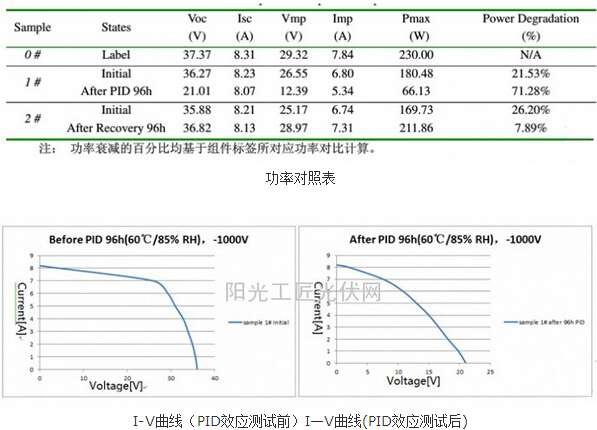

Solar cell assembly 
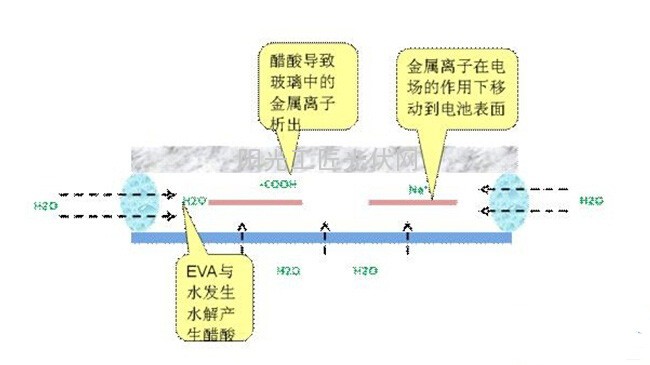
Precipitation and movement of Na+ 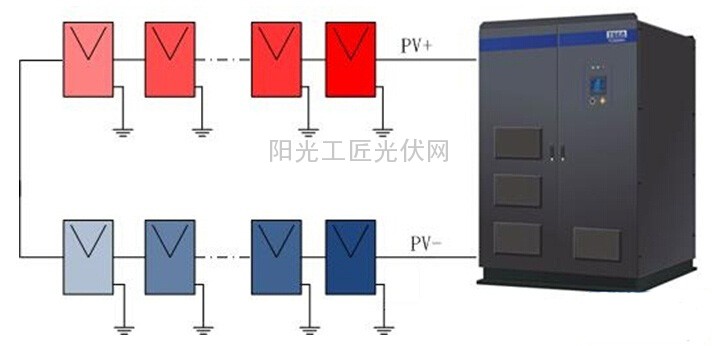
The relationship between the position of the panel in the array and the bias voltage 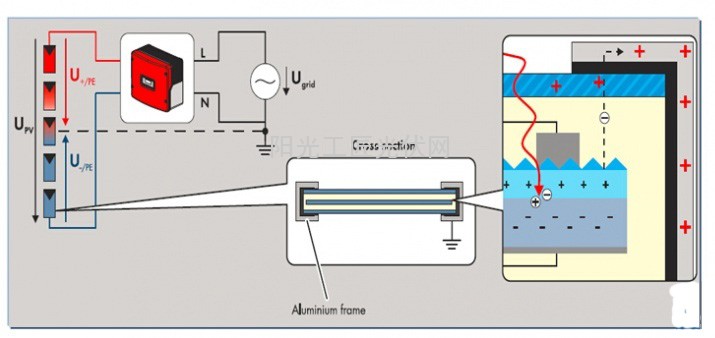
Leakage current path under negative bias [2] 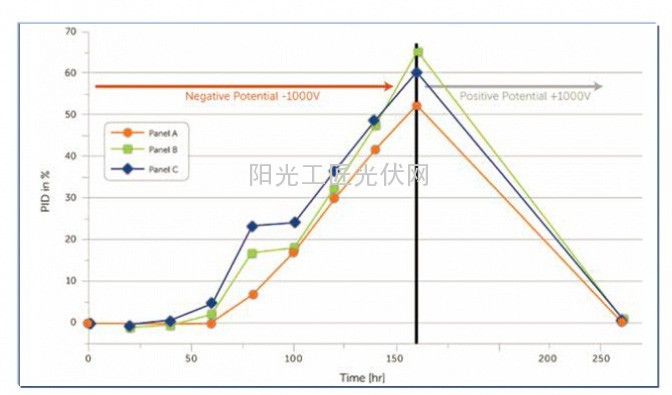
Comparison of Component PID Effects Under Negative Bias and Positive Bias 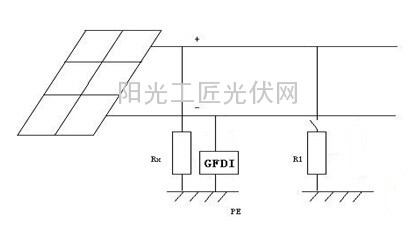
The principle of insulation monitoring 